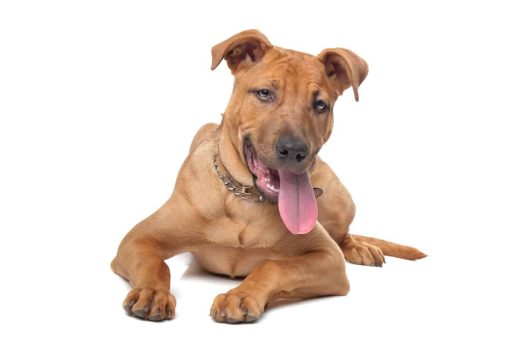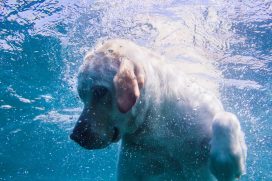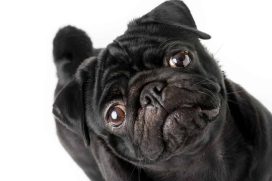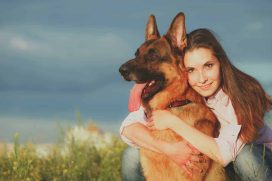The Pitsky is a crossbreed, that comes from mixing an American Pit Bull Terrier and a Siberian Husky. If you’re thinking of getting a Pitsky, then it’s a good idea to learn about the breed first, especially if you’ve got special requirements or you’re looking for a more hypoallergenic dog.
Do Pitskys shed? Yes, Pitskys do shed hair and other allergens from their coat. Some Pitskys shed more than others and it really depends on the type of coat the Pitsky has, with the long haired type shedding more than the short haired.
If you have never owned a dog before, then you may be fooled into thinking that if it has short hair it probably doesn’t shed all that much.Well, unfortunately this isn’t true. Every dog sheds hair, and no dog is 100% hypoallergenic.
The difference between dog breeds is that some shed more hair than others, and some more often than others.
What is a Pitsky?
The Pitsky is derived from the American Pit Bull Terrier and the Siberian Husky or occasionally an American Husky
As such, he can be born with a long coat, a short coat or a coat that is somewhere in between both.

The Husky has a long coarse overcoat, with a thick dense undercoat
The amount of hair a Pitsky will shed depends on the coat characteristics the dog inherits from his parents.
The Siberian and American Husky both have long haired coats with a thick undercoat. The American Pitbull Terrier generally has a short coat.
The Pitsky pup can be born with either coat and this will affect the way he sheds hair.
What different types of coat can a pitsky have?
The Pitsky can inherit a coat like the Pitbull Terrier or a coat like the Husky.
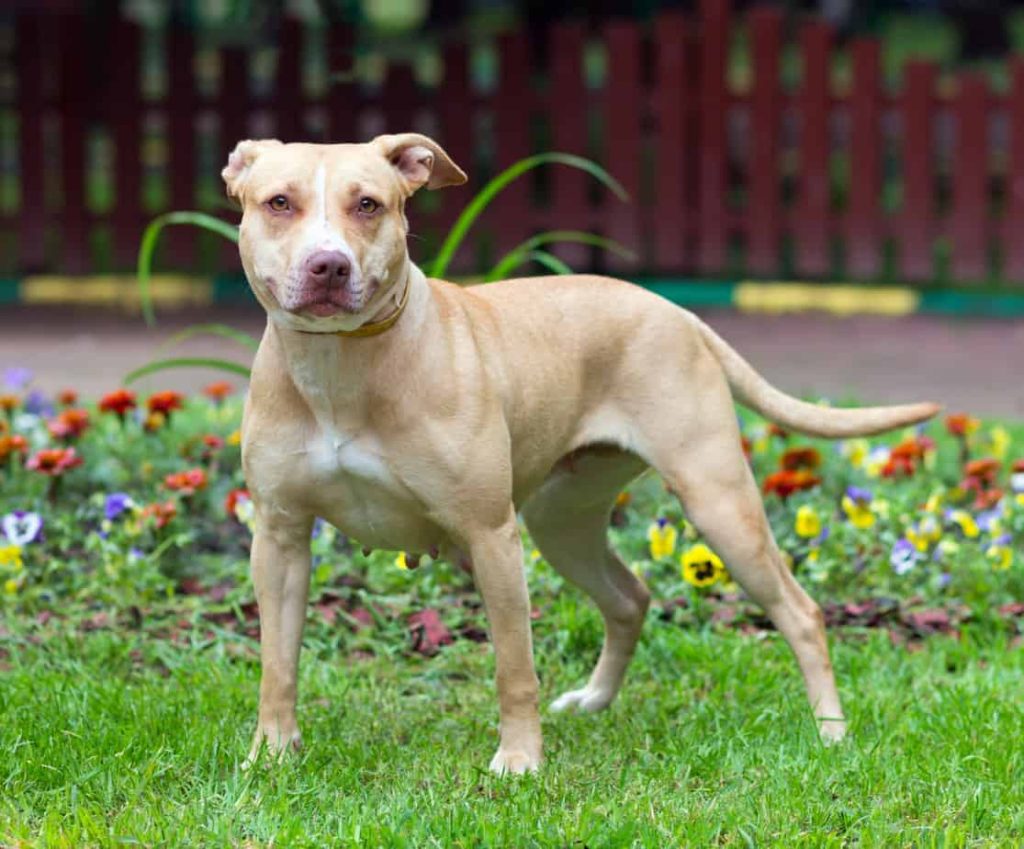
The American Pitbull Terrier coat is short, tightly packed and shiny fur that sits flat against their bodies.
Their coats can be many different colors such as brown, black, white or even bluish-grey, but the texture and form of the coat is usually the same no matter what the color.
When it comes to grooming, the Pitbull terrier can be considered fairly low maintenance with no need for specialized grooming. Brushing once a week and the occasional bath will usually suffice.
The Husky on the other hand has a double coat. The top coat consists of long, thick, rough hairs that protect the skin and undercoat from rain and cold weather.

They also allow the Husky to regulate its temperature in warmer weather and provide protection from the suns rays. The top coat sheds slowly all year round as new hair grows and should never be shaved or cut.
The undercoat is a soft, downy layer of hair that is tightly packed and provides insulation in cold weather protects against the heat in warmer weather.
Like all double coated dogs, the Husky will shed the undercoat twice a year. During the hotter months the coat will be thinner and this thin coat is replaced by a thicker one at the start of winter.
How much do Pitskys shed?
If your Pitsky resembles an American Pitbull, then you can expect the amount of hair loss to be fairly low and consistent throughout the year.
If you are worried about allergies, then unfortunately the short haired Pitsky is no more hypoallergenic than it’s long haired alternative.
This is because the two main dog allergens, Canis familiaris allergen 1 (Can f 1) and Canis familiaris allergen 2 (Can f 2) are usually found in the dander and saliva extracts that can collect on the coat and around your home.
A short haired Pitsky needs less grooming and will generally leave less hair on furniture or your clothes, but can still cause allergies.
The long haired Pitsky on the other hand will shed more hair twice a year, and a moderate amount of hair the rest of the time.
Just like their Husky parents, some Pitsky’s can have a ‘double-coat blow out’ twice a year. This is when they lose a large amount of hair over a few weeks from their undercoat, and it usually coincides with the change in the length of daylight hours in the spring and fall.
Why do some dogs shed more than others?
The amount of hair a dog sheds per week or month can vary from breed to breed, and even within breeds.
There are lots of factors that determine the rate of hair loss in dogs. The most prevalent factor is the type of coat they have. Some coats are short and fine, some are long, some wiry and some dogs like the Husky have an undercoat.
However, just like with us humans, dog hair is lost to make way for new hair to grow.
Dog hair actually goes through four stages of growth: anagen, catagen, telogen and exogen. During the longer days of spring and summer, hair will usually grow at a quicker rate than during the winter months.
It can take from 2 to 4 weeks for dog hair to grow, and this can coincide with old hair loss. This whole process varies from breed to breed.
A healthy coat is usually a sign of a healthy dog. If a dog is sick or is malnourished, then this will affect hair growth and may expedite shedding temporarily.
How can you reduce the amount of hair your Pitsky Sheds?
A healthy, well nourished dog will lose hair naturally. The rate of hair loss is determined by the breed, coat type, the time of year and the dogs diet.
1. By Grooming Regularly
It’s not really possible to reduce the amount of hair loss, but you can reduce the amount of hair buildup around your house with regular grooming.
The short haired Pitsky should be brushed daily with a slicker brush. This will help to remove loose, dead hair and will stimulate the production of natural oils at the base of the coat. You never shave the coat of a short haired Pitsky (or Pitbull) as this can leave bald patches that can get sunburnt easily.
The coat of the long haired Pitsky should be brushed regularly too, to remove dead hairs. You can minimise the amount of hair that is left around your house during the loss of the undercoat by using an undercoat deshedding brush such as a Furminator.
This type of brush is great for dogs with an undercoat and can be used all year round. I use one on my Border Collie Millie regularly all year round and it really reduces the amount of hair she leaves around the house.
2. Feed Your Dog a Suitable Diet
The other way you can reduce unnecessary shedding is through diet. In fact, you can fix a lot of health problems by switching your dog to a healthier diet.
I feed both of my dogs a raw meat diet, supplemented with vegetables and fish oil. The difference between their coats when on a dry food diet, and now is like night and day.
If the raw diet isn’t for you, then choose the best grain free, holistic dry food that you can afford. Cut out the store bought treats and use fruit and vegetables as treats.
3. Treat Allergies and skin infections
If your Pitsky is suffering from a food allergy, a hormone imbalance or a bacterial or fungal infection this can also cause excessive shedding. All of these problems can be caused by an inferior diet.
You should always consult your vet to get a proper diagnosis before experimenting with diet. If your vet can’t pinpoint any underlying health condition (as is often the case), then a change in diet is always a great first step in resolving issues with the skin of coat.
Summary
The Pitsky is a cross between an American Pit Bull Terrier and the Siberian Husky. It can inherit the coat type of either parent.
Pitskys do shed hair, with some Pitskys shedding more than others. Short haired Pitskys tend to shed less than long haired, and can be considered to be more hypoallergenic (although they still create the same amount of dander and produce allergens like any other dog breed).
Sources
https://journals.sagepub.com/doi/full/10.2500/ajra.2011.25.3606
https://pets.thenest.com/american-pit-bull-terrier-look-like-12894.html
https://www.ncbi.nlm.nih.gov/pmc/articles/PMC1364166/
https://www.allergystore.com/news/what-is-pet-dander-and-how-do-you-get-rid-of-it.html

